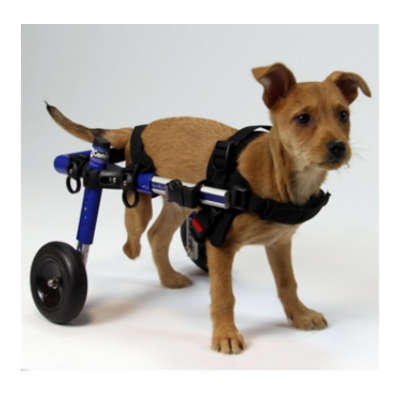Functional Evaluation Scales
Functional evaluation scales are widely used in human medicine, unlike in veterinarian medicine, where validated functional scales for objectively examining functional limitation in dogs do not exist.
Some proposals for functional scales exist and are used with varying consensus in several veterinary clinics, such as in the Alameda East Veterinary Hospital (Colorado, USA) that used the “Functional Questionnaire”[1] as a tool especially indicated for senior or geriatric dogs. In Argentina an evaluation protocol was created for osteoarthritis in dogs that included both the evaluation of mobility as well as self-assessment of the affected joint: inflammation, pain, range of motion and crepitation. In the United States the MASH hospital (Huntingtown, MD) used the C-FIM: Canine Functional Independence Measure © For Paws Rehabilitation. Various rehabilitation centers and veterinary hospitals use unpublished internal protocols.
In human medicine the following are routinely used for the control of certain joints: Install, for global mobility evaluations. Test “get up and go” to measure a person’s degree of autonomy and Barthel, among many more [2]. These scales are validated and accepted by the medical authorities and even used in forensic medicine.
A group of Spanish physiotherapists and veterinarians created a functional evaluation scale for the elbow, knee and hip, these being the joints presenting greater pathology.
The Bioarth scale intends to be a practical tool for evaluating different functional problems that affect joints, with an organized and systemized scoring system.
This scale does not try and substitute any other procedure but rather is a valid tool that helps both the initial evaluation of the patient as well as the evaluation of their progress over time.
The evaluation of functional limitation using this scale should be carried out by a veterinarian or specialized pet physiotherapist. The functional evaluation does not always correlate with the radiological signs. In physical therapy the functional examination is an essential parameter for knowing the condition of the osteoarticular system and its evolution, together with an adequate physical examination; the radiological exam and other diagnostic imaging techniques are, as their own names indicate, complementary tests.
This scale established a scoring system (from 0 to 3 and 0 to 2 according to the case) for each of the 12 parameters examined. After this evaluation we can know the status of the three basic functional parameters: functional limitation, joint mobility and muscular atrophy.
The first block evaluates functional limitation of the affected joint using a scoring system that quantifies posture changes, limping and resistance to walking and playing (items 5 and 6 can be answered directly by the owner). A long flight of stairs is recommended for checking items 7 and 8.
The second section is intended to assess joint mobility limitations to see if there is any loss in degrees of flexion and extension of the examined joint and if this evaluation causes any pain. Measuring the range of motion is done using the standard parameters [3].
To evaluate muscular atrophy we will use palpation and a tape measure, comparing the affected limb with the contralateral limb (provided that it is not affected), otherwise resorting to clinical experience.
The Bioarth Evaluation Scale was presented in the 4th International Symposium on Rehabilitation and Physical Therapy in Veterinary Medicine; Arnhem, The Netherlands.
[1] Millis D. et al., Canine Rehabilitation and Physical Therapy, Saunders, 2004
[2] Viel E., Physiotherapy diagnosis, Masson, 2004
[3] Jaeger G., Marcellin-Little DJ, Levine D., Reliability of goniometry in Labrador Retrievers, American Journal of Veterinary Research 63:979-986, 2002

